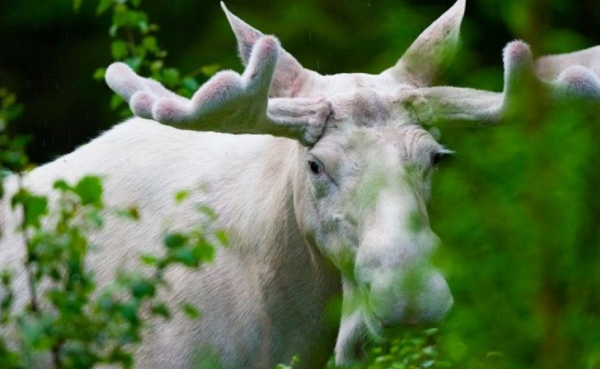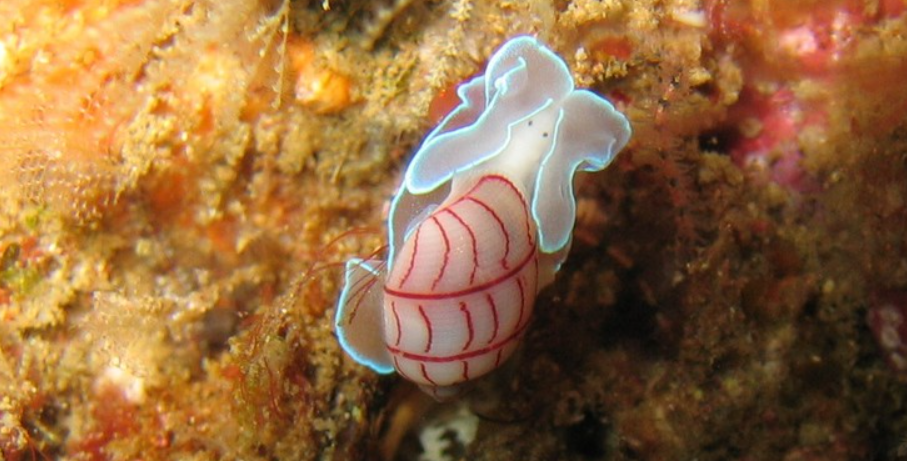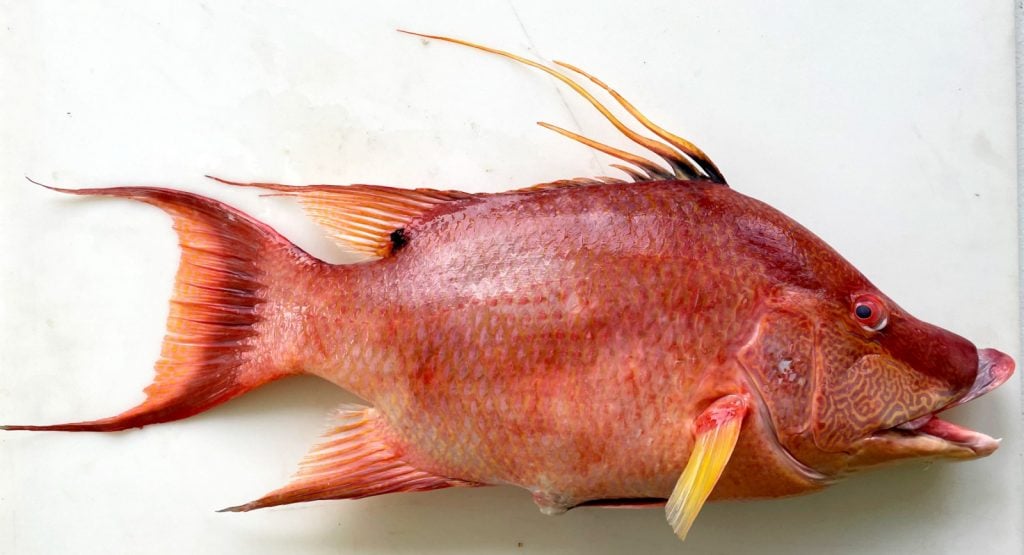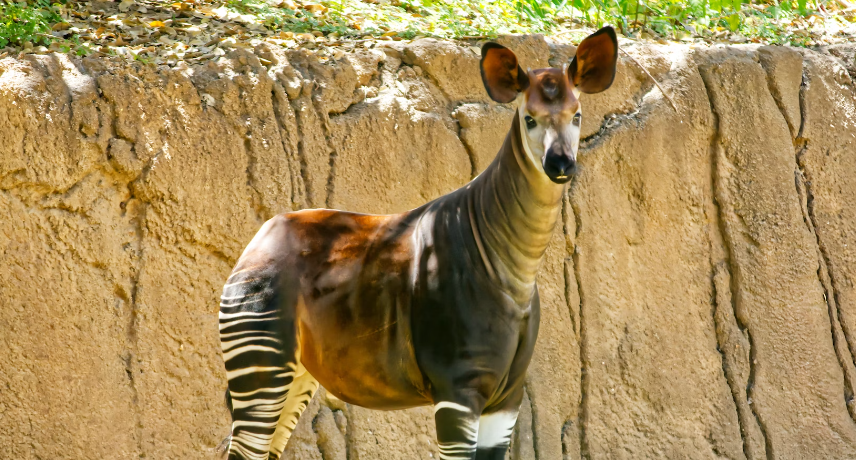This Is a Rare White Moose: Have You Ever Seen It Before?

© Wikimedia Commons
We are sure that you know about moose. And if you have not seen one in real life, it is safe to say you have at least witnessed them on TV. Well, what about rare white moose? Although their looks might make you believe they are photoshopped, they are in fact very real. Here is everything you need to know about rare white moose.
What Is a White Moose?
The white moose, also known as albino moose or ghost moose, is a rare color variant of the moose (Alces alces). These moose have a genetic condition called albinism, which results in a lack of pigmentation in their fur, skin, and sometimes even their eyes. As a result, white moose appear almost entirely white, with a pale or cream-colored coat.
White moose are not a separate species. They are the same as regular moose, but their unique coloration sets them apart. Albinism is an inherited genetic trait, and it occurs when an individual inherits two recessive genes for the condition.
Rare but at Risk
These rare and majestic creatures can capture the public’s fascination when spotted in the wild. However, their distinctive coloration can make them more vulnerable to predators and may pose challenges to their survival, as they may be more visible to predators in their natural habitat. Conservation efforts are often in place to protect and preserve these unique individuals.

Rare White Moose Sightings in Scandinavia
Recently, people have spotted some rare white moose in Värmland. However, the white moose of Värmland are not albinos. Instead, they exhibit leucism, a condition similar to albinism but causing partial loss of pigmentation in the skin, hair, feathers, or scales. Unlike albinos, their eyes are not red. Leucism is a permanent condition seen in polar bears. In some animals like the arctic fox, arctic hare, and European weasel, it serves a protective function in winter, although these animals are not albinos.
Research Tries to Prove That White Moose and Regular Moose Are Not Related
Researchers at the Swedish University of Agricultural Sciences aim to compare the DNA of white moose with their common brown counterparts to identify the genetic mutations responsible for their white coloration. While white moose are most abundant in Värmland, they can also be found in Norwegian counties Østfold, Akershus, and Hedmark, as well as occasionally in North American moose. These moose, often referred to as “white spirit moose” by Native Americans, do not frequently migrate from Värmland to Norway.

The study utilizes advanced DNA sequencing technology to understand the genetic basis for the white moose coloration, with researchers awaiting the results to identify specific gene deviations. An incident involving a white moose named “Albin” in Østfold County in 2011 gained national attention, but it was unfortunately hunted during the hunting season by Danish hunters who were unaware of its fame.
Fun Facts About Moose
Here are some fun facts about moose:
1. They Are Good at Sports
Well, kind of! Moose are actually very athletic. Despite their large horns, moose are versatile creatures that can thrive both on land and underwater. They are proficient swimmers, covering approximately 5-7 miles within an hour. Adult moose can sprint at speeds of about 35 miles per hour on land and trot at a speed of up to 20 miles per hour, allowing them to cover significant distances even when not racing. Moose are active throughout the day, with peak speeds observed in the morning and evening.
2. They Prefer Cold Weather
Moose are well-adapted to cold weather, with large hooves that function like snowshoes, allowing them to move and run in snowy conditions. When the snow melts, moose spend much of their time swimming in lakes, even in frozen winter. They can swim up to 10 km without stopping. While on land, moose have significant running power, reaching speeds of 35 miles per hour for short distances and maintaining a speed of 20 miles per hour for up to one hour during longer journeys.
3. They Can Swim Really Well
Moose are natural swimmers, excelling in the water from birth and maintaining this skill into adulthood. A fully developed moose can swim at speeds of up to 6 miles per hour for about two hours. Despite their large size, moose can float, enabling them to regulate body temperature during hot summer days. In winter, when grazing is challenging, moose may lose up to 30% of their body weight. Interestingly, male moose expend the same amount of energy each year developing their antlers as pregnant women do during pregnancy.
4. They Have a Long Lifespan
The average lifespan of moose is around 20 years, but many do not reach this age due to predation by wolves or bears. However, if moose manage to avoid hunters and predators while on land, they can live up to 20 years, although such instances are rare.
5. They Are Threatened by Snails
Moose are at risk from certain snails that harbor brain worms, which can cause neurological damage and be fatal. While hunting in warm, shallow water, moose often consume these snails. Interestingly, other members of the deer family commonly have brain worms but are unaffected. Moose lack front teeth, enabling them to graze underwater and draw in small seaweed with their jaws.
6. They Like to Spend Time in the Water
The moose’s prolonged life is attributed to its extensive time spent in the water. Remaining in water throughout the day reduces stress on their bones and joints, lowering the risk of conditions like osteoporosis and arthritis. Additionally, being at a height of just two feet above the water serves as a deterrent to predators like wolves and mountain lions, as hiding in water-surrounded areas is challenging for potential threats.
7. The Word “Moose” Comes From the Algonquin Language
Moose are herbivores that need to eat continuously throughout the day to stay satiated. The name “moose” comes from the Algonquin word “Moz or mons,” meaning twig eater. They consume various plants and require almost 10,000 calories per day. Similar to cows, moose have a four-chambered stomach.
8. They Shed Their Horns Every Year
Moose undergo an annual shedding of their antlers in winter, growing a new set in the spring. Each year, the newly developed antlers tend to be more impressive than the previous ones, with antler nubs transforming into spikes and spikes evolving into the iconic paddles that contribute to the moose’s distinctive appearance.
White Moose Endangerment and Conservation
White moose, with their distinctive coloration due to leucism, face various challenges that impact their population and well-being. While as of now, they are not a separate species, the rarity of white moose makes them vulnerable to certain threats, and conservation efforts are essential to ensure their survival.

White moose, like their brown counterparts, are susceptible to predation by natural predators such as wolves and bears. Additionally, there is a risk of hunting, either unintentionally due to mistaken identity or intentional targeting by individuals seeking unique trophies. Loss of habitat due to human activities, such as deforestation and urbanization, can impact both the availability of suitable habitats for white moose and their access to resources like food and water.
Have you ever spotted a rare white moose before?
You might also want to read: Rare Brown Spotless Giraffe Spotted in a Tennessee Zoo


